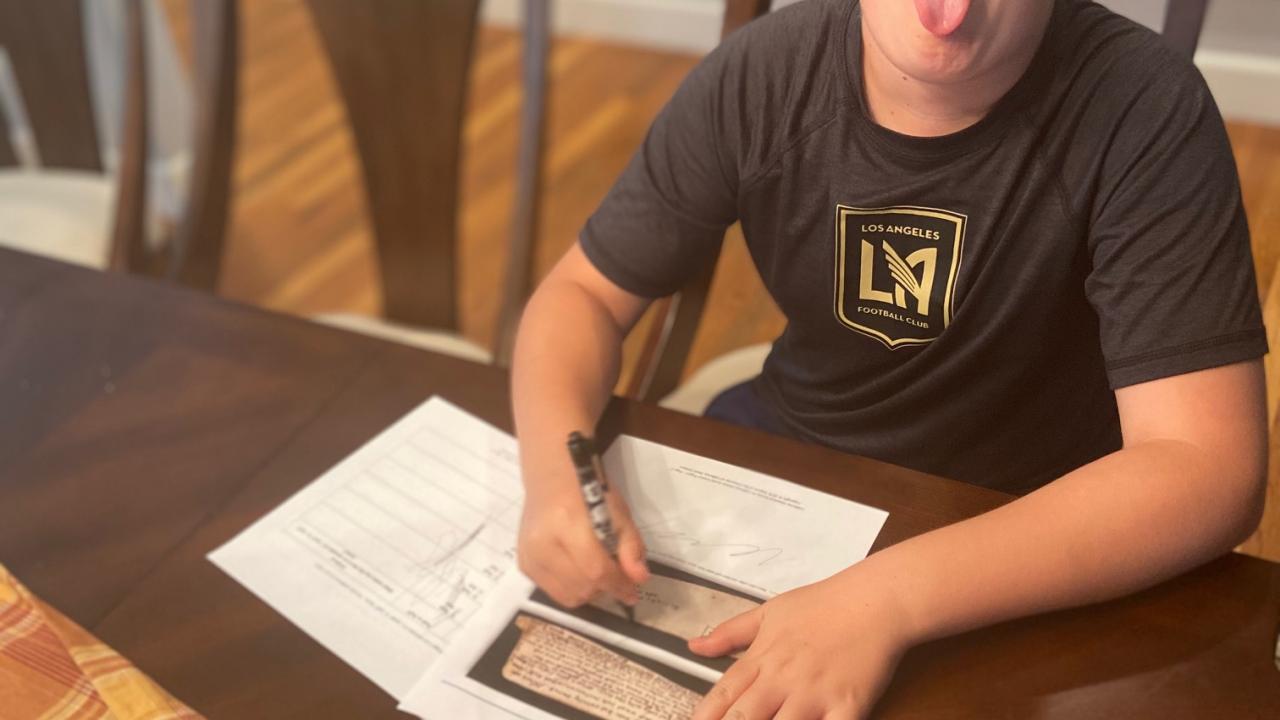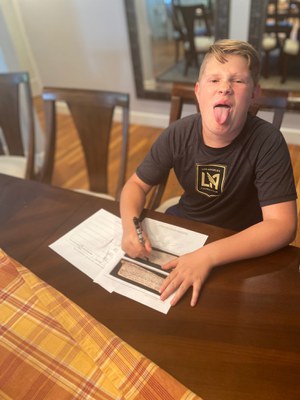
Parents' Guide to History-Social Science
 My family just started week five (or is it week six – I’ve officially lost the will to keep count) with our three elementary-school-aged children at home, and while we’re so fortunate to be together, our family’s attempt at distance learning feels like a mess. In week one of shelter in place, which seems like a lifetime ago, I was almost optimistic about having time alone at home to work and to experiment with some school work with my kids. That first Monday, I earnestly pulled together what I thought were the coolest primary sources about Egypt for my 6th grader (and then forced him to do sentence deconstruction on a couple of them; he will resent me forever for this). And then I whipped out the coolest primary source set about California in 1906 in attempt to ask my second and fourth graders to learn about the San Francisco Earthquake and push/pull factors in explaining why people move (see the other blog). My kids of course rebelled; who am I to try to pose as their teachers! As I was trying – and failing – to pick up my kids’ history classes where I think their teachers left off, I also got on the phone with my sons’ teachers who explained that finding and communicating with their students is one challenge. But another challenge was arming their students’ parents with a bit of knowledge about what’s going on in the class – sort of deputizing the parents to help make sure that instructions are understood, and ensuring that some activities can happen. So with that in mind, I started to draft a crib-sheet for parents that teachers and districts may want to distribute. I am under no illusions that this kind of information could ever substitute for a classroom experience (my children will be the first to point this out).
My family just started week five (or is it week six – I’ve officially lost the will to keep count) with our three elementary-school-aged children at home, and while we’re so fortunate to be together, our family’s attempt at distance learning feels like a mess. In week one of shelter in place, which seems like a lifetime ago, I was almost optimistic about having time alone at home to work and to experiment with some school work with my kids. That first Monday, I earnestly pulled together what I thought were the coolest primary sources about Egypt for my 6th grader (and then forced him to do sentence deconstruction on a couple of them; he will resent me forever for this). And then I whipped out the coolest primary source set about California in 1906 in attempt to ask my second and fourth graders to learn about the San Francisco Earthquake and push/pull factors in explaining why people move (see the other blog). My kids of course rebelled; who am I to try to pose as their teachers! As I was trying – and failing – to pick up my kids’ history classes where I think their teachers left off, I also got on the phone with my sons’ teachers who explained that finding and communicating with their students is one challenge. But another challenge was arming their students’ parents with a bit of knowledge about what’s going on in the class – sort of deputizing the parents to help make sure that instructions are understood, and ensuring that some activities can happen. So with that in mind, I started to draft a crib-sheet for parents that teachers and districts may want to distribute. I am under no illusions that this kind of information could ever substitute for a classroom experience (my children will be the first to point this out).
 However, in an effort to provide parents with a bit of context, direction, and conversation opportunities with their children, we developed a Parents' Guide to History-Social Science for California. This resource might be useful for parents who, like me, are fumbling through distance learning:
However, in an effort to provide parents with a bit of context, direction, and conversation opportunities with their children, we developed a Parents' Guide to History-Social Science for California. This resource might be useful for parents who, like me, are fumbling through distance learning:
- There are very brief paragraph-long explanations of what students are supposed to learn in each grade level each year.
- We included key overarching questions that students develop interpretations for over the year (questions like: what did freedom mean to the nation’s founders and how did it change over time).
- We provided a few topics that students are likely to have covered in school between April and June, along with links for lessons that can support this at a distance.
- For each grade span (elementary, middle, and high school), we also offered a brief overview that explains how skills (like learning to find your place in the world in elementary school, read and compare primary sources in middle school, and analyze sources to create an argument in high school, for example) are supposed to develop over the course of the years.
Teachers know this material inside out, but this could be a resource that teachers might distribute to both parents and students. This could be a place to start a conversation with children about what they’re learning, what they’re interested in studying, what questions they have about the world, and how they feel about their place in the world.
- To download the Parents' Guide, click here.
- For more resources for parents and teachers, click here.
- And lessons and other materials for students, visit the CHSSP Homeschool page.
